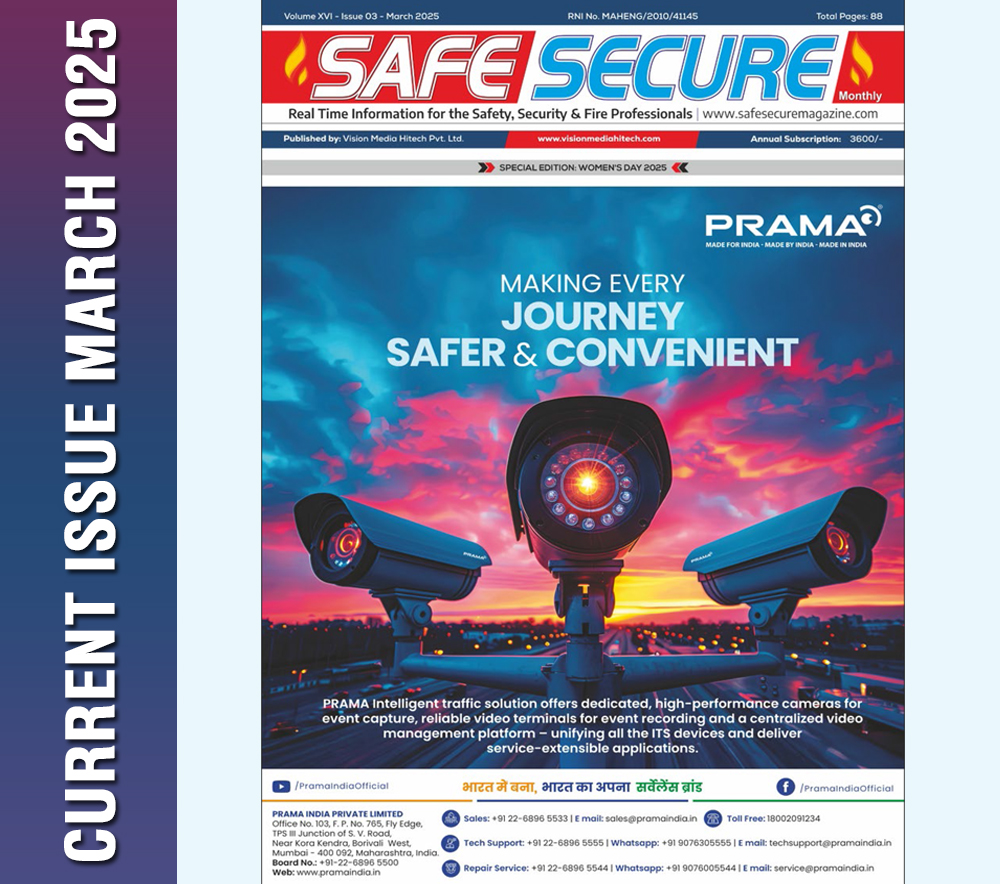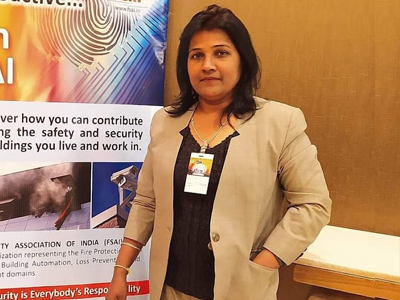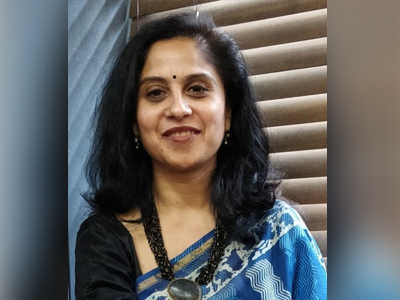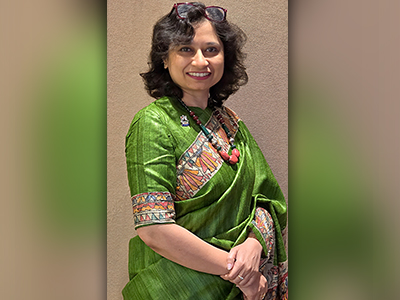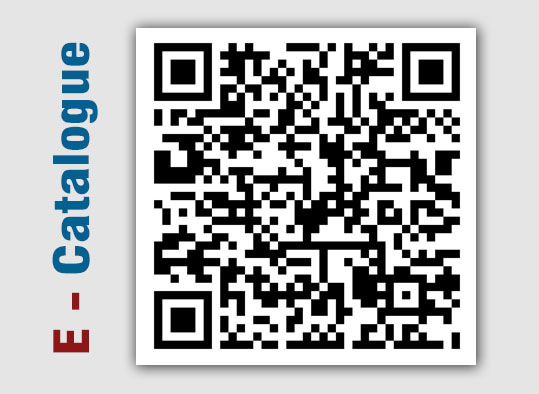Reducing Fire Incidents by following Good Engineering Practices in Electrical Wiring installations

-by Ulhas Vajre
“Investigations of numerous major Fires in Industries, Workshops, Hotels, High Rise Buildings, Residential Complexes and many other such occupancies have revealed that Electrical Wiring faults and flaws are the main sources of fires.”
COMMON CAUSES OF ELECTRICAL FIRES:
• Short circuits at joints and terminations due to bare wires loosening out of the terminations or wires fraying out and touching other terminals.
• Arcing at improper joint, loose connections and terminations resulting in high temperature build up.
• Earth faults in wires with deteriorated insulation.
• Short circuits due to mechanical damage to insulation.
• Overloading
• Heat from other sources
• Sub Standard installation Practices.
Fire Safety Measures:
Following Safe practices in respect of electrical wiring would help to reduce Fire Incidents:
Selection:
• Prefer copper wiring/cables,
• Use only ISI marked wiring/cables and related accessories,
• Don’t use 1 sq mm and lower cross section wires at all in the residential wiring
• Use 10 sq mm wire/cable for main connection between the electricity supply meter and the main switch on the distribution board in the house/flat and 6 sq mm wires/cable or connection between DB and SDB in each room
• Use 4 sq mm wires/cable for supplies to geysers, heaters, Acs, and such heavy loads and 2.5 sq mm wires/cable for TV, kitchen & other appliances.
Installation:
• Don’t install electrical power circuits and communication circuits in the same conduit/casing.
• Ensure that the wiring for high power consuming devices like air conditioners, geysers etc run separately
• Seal cable passes and other openings effectively, using suitable fire protection method such as fire stops and fire breaks. Also go for compartmentalization of spaces.
• Take extra safety precautions such as reliable termination, use of continuous wire without joints, mechanical protection, thicker insulation and high-power rating for wiring in respect of essential services requiring continuous power such as fire alarm system, communication system, computers etc.
• Ensure that the appliances like computers or electronic devices which are sensitive to voltage fluctuations have individual neutrals taken from the supply and there is no neutral looping.
• Ensure that plug points are away from the places such as sinks, wash basins, where they are likely to come into contact with water.
• Derate current rating of the wires to ensure that the temperature remains safely within the prescribed limits when a number of wires are laid together in casing or conduit.
• Avoid temporary wiring and connections. Install a master control switch outside office occupancies to enable switching off power after office hours.
• Have a spare galvanized Steel wire in the conduit for pulling wires in future for additional circuiting or for replacing defective wires.
• Don’t use flexible conduits for general wiring.
Protective Accessories:
• Don’t increase the fuse capacity for preventing or elimination of frequent fuse blow up. Prefer High Rupturing Capacity, i.e. HRC fuses.
• Use Miniature Circuit Breakers, i.e. MCBs for protecting higher capacity loads like geysers, air conditioners, etc.
• Use separate MCB distribution boards for circuits supplying to devices/appliances which can be switched off with the master switch and for other circuits which are not to be switched off by the master switch.
• Use Residual Current Operated Circuit Breakers, i.e. RCCBs for protection against leakage currents and shock hazards. Don’t depend on uses, MCBs etc.
Plug and Socket:
• Use 3-pin plugs to make connections to the sockets. Never insert loose wires.
• Provide 3-pin plugs for electrical appliances and ensure that earthing is connected to the pin meant for earthing.
• Don’t use a 3-pin plug with earthing terminal missing or sawed off.
• Ensure that plug and socket fit each other smoothly and provide adequate contact or carrying rated full load current.
• Don’t try to force a 2-pin plug in a 3-pin socket.
• Avoid connecting multiple appliances or circuits to a single socket.
Special Requirements for high rise buildings:
• Employ special insulating materials such as FRLSZH (Fire Retardant Low Smoke Zero Halogen) for wiring/cabling meant for fire alarm systems, emergency lighting or Fire Survival wires and cables for such critical applications, whose uninterrupted performance in fire situations is essential. Provide separate circuits or firefighting pumps, lifts, staircases and corridor lighting and blowers for pressurizing system, directly from the main switchgear panel. Use separate conduits for such circuits.
• Label clearly the master switches controlling essential services.
• Lay electrical distribution cables /wiring in a separate duct. Seal the duct at every floor with noncombustible materials having the same resistance as that of the duct.
• Don’t Lay water mains, telephone lines, intercom lines, gas pipes and any other service line in the duct meant for electrical cables.
• Use separate metal conduits for medium and low voltage wiring meant for lighting or other services, above false ceiling.
• Provide suitable circuit breakers at the appropriate points.
• Use brass or copper for bonding and earthing. Use non-rusting bolts in damp situations.
Testing:
• Check integrity of insulation at regular intervals, may be half yearly or yearly.
• Conduct insulation resistance test at least once in a year and when any addition or alteration is carried out in the installation.
• Ensure that all electrical wiring and repair jobs including additions, alterations and repairs to the existing installations are carried out by LECs as per CEA Regulations 2023.
ULHAS VAJRE
• C. ENG (I), DEE, AMIE, BE, MIE, FIV, FISLE, MIIE, CEM, CEA, FIAEMP, FCEEAMA, CESE, GEM CP, NSAT CP.
• CHARTERED, CONSULTING AND COMMISSIONING (EHV/HV/LV) ELECTRICAL ENGINEERS,
• BEE, MoP, GOVT. OF INDIA, CERTIFIED ENERGY AUDITORS,
• AUTHORISED CHARTERED ELECTRICAL SAFETY ENGINEER BY CHIEF ELECTRICAL INSPECTOR, IE&L
• DEPARTMENT, GOVT. OF MAHARASHTRA.
• EMPANELED FIRE & LIFE SAFETY AUDITOR BY MCGM, MFB.
• GEM GREEN BUILDING SUSTAINABILITY CERTIFIED PROFESSIONAL
• TESTING AND CERTIFICATION OF PETROLEUM AND HAZARDOUS STORAGE TANKS, UNDER PETROLEUM RULES 2002.
• THIRD PARTY INSPECTION SERVICE PROVIDERS [Transformers, HV/EHV Circuit Breakers, PCCs, MCCs, Motors etc]
• ARC FLASH STUDIES AS PER NFPA STANDARDS
• CLASSIFICATION OF HAZARDOUS AREA STUDIES
• APPROVED VALUERS (PLANT AND MACHINERY),
• RECOGNISED COMPETENT PERSON UNDER PETROLEUM RULES BY PESO.
• SIEMENS AUTHORISED VENDOR FOR VCB RETROFITS & SITE SERVICES
(This "Expert Talk" Published in April 2024 Edition)





.png)


